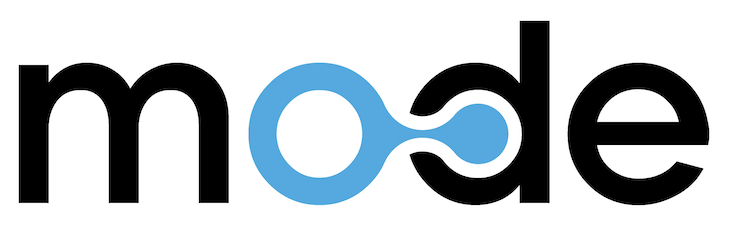Additive Manufacturing
Services
Tailored Design Optimization for Additive Manufacturing
- Our service focuses on the specialized task of optimizing your product designs specifically for 3D printing. This involves not just ensuring that the designs are visually appealing, but also structurally efficient and functionally superior. We recognize that additive manufacturing offers unique possibilities that traditional manufacturing does not, such as complex geometries and customizations.
- Our team of expert engineers and designers will closely collaborate with you to analyze your existing product designs. We apply advanced computational techniques, including finite element analysis and topology optimization, to refine these designs for the specific constraints and opportunities of additive manufacturing.
- The outcome is a series of refined product designs that are not just optimized for the unique capabilities of 3D printing but also more cost-effective to produce. These optimized designs often lead to products that are lighter, stronger, and more efficient, ultimately enhancing the end-user experience and providing a competitive edge in the market.
Comprehensive Rapid Prototyping and Iterative Development
- We provide an extensive rapid prototyping service that leverages the speed and flexibility of additive manufacturing. This service is essential for a dynamic development process, allowing for quick iterations and refinements of product designs.
- Upon receiving your design concepts, our team swiftly produces high-fidelity prototypes using our cutting-edge 3D printing facilities. This rapid prototyping enables you to physically evaluate design aspects, perform functional tests, and gather feedback in real-world scenarios. We facilitate a continuous feedback loop, making necessary adjustments and producing subsequent iterations in a streamlined manner.
- This iterative approach significantly accelerates the product development cycle, allowing for more agile responses to market needs and user feedback. It results in products that are thoroughly tested and refined, ensuring a high level of quality and user satisfaction upon market release. Additionally, this process can uncover innovative design solutions and efficiencies that might not be evident in the early stages of design.
Advanced Material Consulting and Selection
- Recognizing the critical role of materials in the success of additive manufacturing projects, we offer a comprehensive consulting service on material selection. This service is tailored to identify the best materials that align with the specific functional requirements, durability needs, and aesthetic preferences of your products.
- Our material scientists and additive manufacturing experts conduct a thorough analysis of your product’s application, environmental exposure, mechanical requirements, and budget constraints. We then recommend materials from a wide range of options, including advanced polymers, metals, and composites, which are best suited for your specific application.
- Choosing the optimal material ensures that the final printed product not only meets but often exceeds expectations in terms of performance, longevity, and appearance. This meticulous selection process leads to enhanced product reliability and customer satisfaction, while often optimizing cost and production efficiency. The right material choice can also open up new possibilities for product innovation and market differentiation.
More About Additive Manufacturing
Additive Manufacturing, more commonly known as 3D printing, represents a paradigm shift in the way objects are conceived, designed, and produced. At its core, this innovative process involves creating physical objects by adding material layer by layer, a stark contrast to traditional subtractive manufacturing methods that involve cutting or hollowing out pieces of solid material.
The journey of additive manufacturing begins with a digital blueprint, often a Computer-Aided Design (CAD) file, which meticulously details the object's geometry. This digital design is then sliced into thin, horizontal cross-sections, essentially creating a layered roadmap for the 3D printer to follow. The printer, equipped with sophisticated mechanisms, precisely deposits material – which can range from plastics and metals to concrete and even living tissue – layer upon layer. These layers, sometimes thinner than a human hair, are fused together to form a solid object.
One of the most compelling aspects of additive manufacturing is its ability to produce complex, intricate geometries that would be difficult, if not impossible, to achieve through traditional methods. This capability unlocks new frontiers in design and engineering, allowing for the creation of structures with enhanced functionality, optimized strength-to-weight ratios, and minimal material waste.
Additive manufacturing's versatility extends across a wide range of industries. In aerospace, it enables the production of lighter, more efficient components. In healthcare, it paves the way for bespoke prosthetics and implants tailored to individual patients. The automotive industry utilizes it for rapid prototyping and the manufacturing of complex parts. In the realm of consumer goods, it offers unparalleled customization, allowing consumers to have products tailored to their unique preferences.
Moreover, additive manufacturing is heralded for its sustainability advantages. By adding material only where needed, it significantly reduces waste compared to traditional manufacturing. Its ability to produce parts on demand and on-site also has the potential to minimize the carbon footprint associated with transportation and inventory storage.
In the context of Industry 4.0, additive manufacturing becomes even more potent when combined with other technologies such as AI, machine learning, and the Internet of Things (IoT). These integrations can lead to smart manufacturing ecosystems where additive manufacturing processes are optimized in real-time, predicting maintenance needs, and adapting to design changes seamlessly.
In conclusion, additive manufacturing is not just a manufacturing technique; it's a tool for innovation, enabling the creation of products and components that are lighter, stronger, and more complex than ever before. Its impact extends far beyond the production line, driving advancements in product design, supply chain management, and environmental sustainability. As technology continues to evolve, the possibilities and applications of additive manufacturing are bound only by the limits of imagination.
